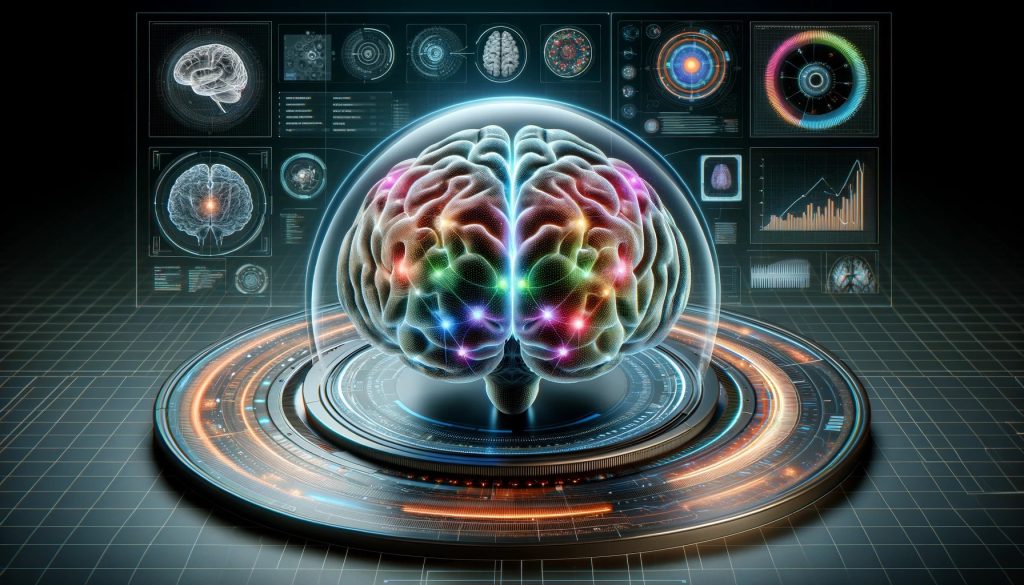Neuroeconomics and Decision Making is an intriguing interdisciplinary field that combines neuroscience, economics, and psychology. It explores how individuals make decisions. This field emerged from the realization that traditional economic theories often overlook the biological and psychological foundations of decision-making. Neuroeconomics addresses this by exploring the brain mechanisms underlying economic choices.
At the heart of Neuroeconomics and Decision Making is the goal to understand the brain processes that evaluate options, assess risks and rewards, and manage impulses affecting economic behavior. Researchers use tools like functional magnetic resonance imaging (fMRI) and positron emission tomography (PET) to monitor and analyze brain activity during decision-making scenarios. Studies have highlighted the critical roles of specific brain areas, such as the prefrontal cortex and the amygdala, in decision-making economics.
Furthermore, by integrating neuroscience with economics, neuroeconomics provides deeper insights into the causes of irrational behaviors in economic contexts. This challenges classical economic models. This integration sheds light on the complex interplay between logical reasoning and emotional responses, enhancing our understanding of human behavior.
As neuroeconomics continues to evolve, it promises to make significant contributions across various domains. This includes marketing, public policy, and mental health. These areas all depend heavily on decision-making processes. This evolving field expands our understanding of economic behavior. It also equips us to better influence and comprehend decisions in our complex world.
Key Concepts in Neuroeconomics
Neuroeconomics and Decision Making get into foundational concepts like utility theory, risk assessment, and the role of neurotransmitters. This provides a biological context to economic behaviors. Utility theory in neuroeconomics goes beyond the traditional economic analysis of choices based on pleasure or satisfaction. It investigates how the brain evaluates the utility of different decisions. It utilizes neural imaging to observe areas activated during decision-making processes. This neuroscientific approach helps explain why individuals may value outcomes differently under similar circumstances.
Risk assessment is another crucial area where neuroeconomics offers significant insights. By studying brain activity, researchers have identified that different people have varying levels of risk tolerance. This links to the activation in brain regions associated with reward, such as the ventral striatum. These findings help explain why some individuals are more inclined to engage in riskier economic activities.
Furthermore, neurotransmitters play a pivotal role in economic decision-making. Dopamine, for instance, influences reward-seeking behavior and can drive economic activities such as spending and gambling. Conversely, researchers have linked serotonin levels to patience and long-term decision-making, crucial for saving and careful investing.
Understanding these neurological underpinnings enriches our comprehension of economic behaviors. They provide a more nuanced view of why individuals and markets behave the way they do. As neuroeconomics continues to evolve, it will not only refine existing economic theories but also enhance predictions about market dynamics and personal financial decisions.
Neuroeconomics in Experimental Settings
Neuroeconomics and Decision Making has significantly benefited from advanced neuroimaging technologies like functional magnetic resonance imaging (fMRI) and electroencephalography (EEG). These tools are crucial for observing and understanding brain activity during economic decision-making tasks. FMRI measures brain activity by detecting changes associated with blood flow. This allows researchers to see which areas of the brain are involved when individuals make decisions involving risk. EEG, on the other hand, records electrical activity in the brain. This provides data on the timing of brain responses to particular stimuli with high temporal resolution.
Typical experiments in neuroeconomics might involve presenting subjects with various economic choices that require evaluating probabilities. This makes predictions about future outcomes, or assessing the value of different rewards. For example, one landmark study using fMRI examined how people decide between receiving a small, immediate reward and a larger, delayed reward. The results highlighted significant activity in the prefrontal cortex. This is a region associated with higher-order cognitive functions, suggesting its role in balancing short-term desires with long-term goals.
Another important study utilizing EEG explored how the brain processes financial loss and gain. The findings indicated that negative outcomes (losses) often elicited stronger and quicker brain responses than positive outcomes (gains). This aligns with the behavioral economics theory that losses loom larger than gains in decision-making processes.
These experiments provide vital insights into the neural mechanisms underpinning economic decisions. They also help to explain why people often deviate from the rational decision-making models proposed in classical economics. As such, neuroeconomics offers a deeper, more integrated understanding of the complexities involved in human decision-making.
Applications of Neuroeconomics
Neuroeconomics and Decision Making provides valuable insights that are increasingly applied across various fields. This enhances traditional approaches with deeper understanding of human behavior and decision-making processes. In marketing, neuroeconomics is utilized to better gauge consumer responses and preferences. This allows companies to tailor advertisements and products that effectively resonate with target audiences. By analyzing how different stimuli affect consumers’ neural activity, marketers can predict which products will be popular and which marketing campaigns will be most effective.
In financial planning, insights from neuroeconomics help advisors understand the psychological factors that influence clients’ investment decisions. This knowledge enables the development of strategies that align with clients’ comfort levels and financial goals while accounting for the irrational biases that often subvert optimal decision-making. For example, understanding the impact of loss aversion on an individual’s investment choices can lead to more personalized, effective financial advice that could help mitigate undue risk exposure.
Furthermore, neuroeconomics is playing a growing role in public policy. Policymakers are employing these insights to design programs and policies that more effectively address human behaviors and societal needs. For instance, by understanding the neural bases of risk perception and economic behavior, governments can create better incentives for public health programs or financial literacy campaigns. This ensures they are more engaging and likely to achieve desired outcomes.
Additionally, the application of neuroeconomic research is leading to the creation of more robust economic models and business strategies. By incorporating the biological bases of behavior, these models account for variability in decision-making processes that traditional economic theories cannot. This offers a more accurate and holistic view of economic dynamics.
Overall, the practical applications of neuroeconomics are vast and varied, providing significant advantages in enhancing understanding and influencing human behavior effectively across different spheres of activity.
Ethical and Future Considerations
The expanding field of neuroeconomics and decision-making brings with it several ethical considerations, particularly concerning the potential for manipulation and issues of privacy. As neuroeconomic techniques become more sophisticated, they grant deeper access to understanding how individuals make decisions, which raises concerns about the manipulation of choices in consumer behavior, voting, and other personal decisions. There is an inherent risk that such insights could be used to exploit cognitive biases rather than to help individuals make better decisions.
Moreover, the gathering and analysis of neural data pose significant privacy concerns. The techniques used in neuroeconomics, such as fMRI and EEG, can potentially reveal intimate psychological and cognitive processes. Ensuring that such sensitive information remains confidential and is used ethically is paramount to maintaining public trust and respecting individual privacy.
Looking to the future, neuroeconomics is poised to deepen our understanding of decision-making processes by integrating more advanced technologies such as machine learning and artificial intelligence. These tools promise to refine the predictive power of neuroeconomic models, providing insights that are not only faster but also more accurate. Such advancements could revolutionize fields ranging from marketing to mental health, providing tailored interventions that help individuals optimize their decision-making patterns.
As we advance, it will be crucial to balance innovation with ethical considerations. Establishing robust ethical guidelines and transparent practices will be essential to navigate the complex landscape where economics meets neuroscience. By doing so, we can harness the full potential of neuroeconomics to enhance societal well-being while safeguarding against potential misuses.
Conclusion
In conclusion, neuroeconomics represents a significant advancement in our understanding of decision-making processes, merging neuroscience with economics to offer a more nuanced view of human behavior. As this field continues to evolve, it brings forth not only the promise of deeper insights into economic and psychological actions but also challenges that necessitate careful ethical consideration. The potential applications of neuroeconomics are vast, stretching across marketing, financial planning, and public policy, with the power to transform traditional practices by integrating a more comprehensive understanding of how decisions are made at the neural level. Moving forward, the balance between leveraging these insights for positive outcomes and addressing ethical and privacy concerns will be paramount. As researchers and practitioners navigate this dynamic field, the future of neuroeconomics and decision-making looks both promising and complex, holding the potential to significantly influence a wide array of economic and social domains.



